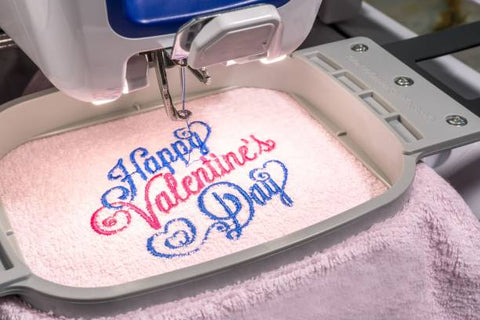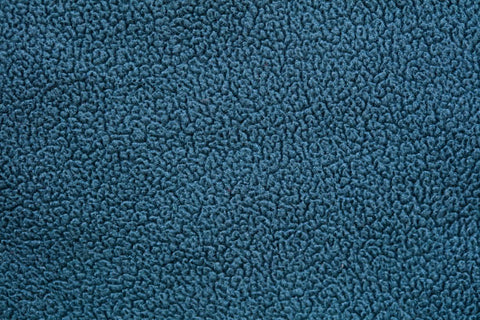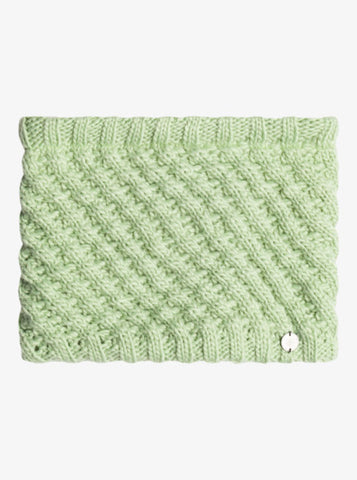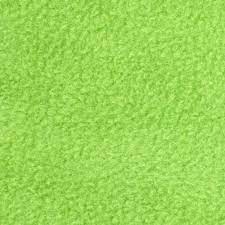
How To Start Embroidery on Fleece Using A Magnetic Hoop
The art of embroidery can elevate a plain fabric into an exquisite creation that highlights your individuality and fashion sense. Moreover, when it comes to selecting the fabric, fleece stands out as an incredibly cozy and adaptable option. However, have you considered the difficulty of maintaining stability while working on your embroidery projects? That's where the remarkable functionality of magnetic hoops comes into action! Within this tutorial, we will provide you with comprehensive instructions on initiating the process of embroidery on fleece by using a magnetic hoop.
Why Choose Fleece: Explaining The Benefits Of Working With Fleece

Pic: Fleece fabric
Choosing fleece as a fabric for garments and various accessories presents multiple benefits that make it an appealing option for both comfort and functionality. Fleece is widely recognized for its outstanding ability to provide noteworthy insulation relative to its weight, offering substantial warmth without adding bulk, thereby making it perfect for layering during colder seasons. Moreover, fleece possesses excellent Breathability, enabling the evaporation of moisture and ensuring optimal comfort while engaging in various activities. Another notable advantage of fleece is its delightful, gentle texture that enhances comfort when worn regularly or during physical endeavors.
Additionally, fleece exhibits long-lasting durability and low maintenance characteristics, effectively withstanding the effects of time such as wear and pilling. It is capable of being machine washed and rapidly dried, offering convenience for regular usage. Fleece also offers versatility, with a range of thicknesses and styles to suit diverse requirements and personal preferences. From lightweight variations suitable for milder climates to heavy-duty fleece designed for extreme cold conditions, there is an option available for every need. Additionally, numerous fleece products are manufactured using recycled materials, providing an environmentally conscious choice that contributes to waste reduction and the promotion of sustainability. Opting for fleece grants you the advantages of a fabric that blends coziness, convenience, and warmth, all while promoting Eco-conscious principles.Understanding Why Magnetic Hoops Are Advantageous For Fleece Projects.
Magnetic hoops provide numerous benefits when undertaking fleece projects, making them a favored option for individuals involved in embroidery and crafting. The dense and elastic quality of fleece presents distinct obstacles during embroidery or the application of decorative stitches. Here is the rationale behind why magnetic hoops offer distinct benefits for these types of projects:
Decreased Fabric Hoop Marking: Fleece, being a delicately textured material, is susceptible to noticeable marks or hoop burn when using conventional hoops. Magnetic hoops offer a solution to this problem by securely holding the fabric in place without applying excessive pressure. This helps maintain the integrity and visual appeal of the fleece while minimizing the risk of unsightly markings.
User-Friendliness: Magnetic hoops exhibit remarkable ease of use, particularly when handling materials that are bulky or thick, such as fleece. They facilitate swift and effortless repositioning of the fabric, resulting in time savings and a reduction in the annoyance typically encountered with conventional hooping techniques. This attribute proves particularly advantageous when tackling extensive or intricate fleece projects that necessitate frequent adjustments to the hoop.
Enhanced Fabric Stability: One of the primary difficulties encountered while embroidering fleece involves preserving fabric stability, and preventing any stretching or distortion. Magnetic hoops offer a firm and uniform grasp on the fabric, guaranteeing its flatness and stability throughout the embroidery procedure. This outcome leads to superior stitching results with increased consistency and quality.
Flexibility: Magnetic hoops offer the ability to accommodate different fabric thicknesses, such as fleece and other textiles, serving as a versatile resource in your crafting toolkit. Whether you find yourself crafting with thin microfleece or thick, plush fleece, a magnetic hoop eliminates the necessity for multiple hoop sizes or modifications by effortlessly adjusting to the material at hand.
Increased artistic innovation: The simplicity and effectiveness of employing magnetic hoops have the potential to stimulate craft enthusiasts to explore intricate designs and advanced techniques on fleece fabric. Recognizing the secure and convenient hooping capabilities can foster assurance and ingenuity, ultimately resulting in the pursuit of more ambitious and elaborate endeavors.
A Brief Overview of Using Fleece on Magnetic Hoop
From choosing the right fleece and tools to the delightful journey of embroidering your chosen design, completing the project, and maintaining it with care, this comprehensive guide will walk you through each stage. We will provide in-depth explanations for every step, equipping you with the knowledge and confidence to successfully undertake your future embroidery endeavors.
Selecting Your Fleece: Tips for choosing the right fleece material for your project.



Polar Fleece Micro Fleece Blizzard Fleece

Anti-Pill Fleece
When choosing the appropriate fleece fabric for your undertaking, it is important to take into account numerous elements to guarantee that the outcome fulfills your requirements in terms of heat retention, coziness, and longevity. Fleece is a flexible textile available in multiple variations, such as Polar Fleece, Microfleece, Blizzard Fleece, and Anti-Pill Fleece, each tailored for diverse purposes. When selecting fleece, it is important to carefully consider its weight and ability to provide warmth. Lighter fleece is ideal for clothing intended for spring and fall, whereas heavier fleece is more suitable for colder winter conditions. Additionally, it is crucial to take into account the stretch and recovery properties of the fleece, particularly for items of clothing that require flexibility. The instructions for care are also an important aspect to consider, as certain types of fleece may demand unique treatment to avoid pilling or shrinking. Choosing between solid colors and prints will ultimately depend on the intended purpose of the project, with solid colors providing flexibility and prints introducing a playful component. The texture of the fabric is equally significant for garments that will be worn, therefore select a fleece that boasts a pleasing softness. Additionally, the decision might also be swayed by the environmental consequences, as certain fleeces crafted from recycled materials provide a more environmentally friendly alternative. Although price may serve as an indicator of quality, opting for a superior-quality fleece can result in a product that is more long-lasting and comfortable. If feasible, acquiring a sample before making a substantial purchase can assist in guaranteeing that the fleece aligns with your expectations. By thoughtfully taking these factors into account, you can choose the ideal fleece fabric for your endeavor, whether it be crafting snug blankets, stylish clothing, or any other imaginative pursuit.
Tools And Equipment: A Checklist of Necessary Items, Emphasizing The Magnetic Hoop.
To achieve accuracy, convenience, and top-notch outcomes in sewing or embroidery projects, it is crucial to gather the appropriate tools and equipment. When undertaking projects that involve delicate fabrics susceptible to stretching or snagging, such as fleece, employing a magnetic hoop can greatly improve the overall process. Presented below is a list of essential items required for your project, with particular attention given to the magnetic hoop.
The Magnetic Hoop is an indispensable instrument when it comes to embroidery on fabrics like fleece or other delicate and stretchy materials. With its powerful magnets, it firmly secures the fabric without causing any noticeable marks or hoop burn, enabling more precise and stable embroidery. This is particularly advantageous for intricate designs that necessitate accurate alignment or for fabrics that pose difficulties for traditional hooping methods.
Embroidery Machine: It is important to invest in a high-quality embroidery machine that can accommodate your magnetic hoop. Make sure it possesses the necessary capacity to handle both the dimensions and intricacy of the designs you plan to produce.
Embroidery needles should be employed, as they are specifically crafted for this craft. Not only do they possess a larger eye suitable for accommodating embroidery thread, but they also have the necessary sharpness to puncture thick fabrics without causing any harm.
High-grade embroidery threads are available in diverse materials such as polyester and rayon. When choosing colors for your project, it is essential to consider the design and ensure that the threads are durable and resistant to fading.
Stabilizer: Its purpose is to lend support to the fabric during embroidery, averting any stretching, puckering, or distortions. When working with fleece, it is advisable to select an appropriate stabilizer, such as either a cut-away or tear-away variety, based on the specific requirements of your project.
Cutting tools: It is essential to have a well-honed set of scissors for trimming thread and fabric. It may be worth considering the purchase of embroidery scissors or snips to ensure meticulous cutting near the stitches.
Seam Ripper: Accidents occur, and a seam ripper can be a valuable tool for eliminating unwanted stitches without causing harm to the fabric.
Accurate measurements are crucial for successful projects, and to achieve this, it is important to utilize appropriate tools based on the type of surface being measured. Measuring tape is recommended for curved surfaces while rulers are ideal for straight edges.
Temporary fabric markers or chalk can be employed to ensure the precise placement of your design on the fabric. It is important to choose markers or chalk that can be effortlessly erased once the embroidery is finished.
Embroidery Design Software: If you are involved in the creation or customization of embroidery designs, appropriate software can assist you in modifying, re-sizing, and transferring designs to your embroidery machine.
When dealing with multiple layers or the need to keep fabric pieces in place, the assistance of fabric clips or pins that leave no visible marks on the material can be beneficial.
Iron and Ironing Board: Enhancing the visual outcome of your embroidery project can be greatly achieved by ironing the fabric both before and following the embroidery process. Employing an iron equipped with a steam feature, along with a safeguarding fabric, is recommended to prevent direct heat exposure to the fleece.
How Magnetic Hoops Work?
In the realm of embroidery, magnetic hoops have emerged as a groundbreaking device that provides a straightforward yet remarkably efficient means of fastening fabrics while executing the embroidery procedure. Unlike conventional hoops which employ clamps to secure the material, magnetic hoops rely on powerful magnets to firmly hold the fabric in position between two segments of the hoop. By utilizing this technique, the necessity for applying physical force to the material is eliminated, subsequently minimizing the likelihood of hoop burn, stretching, or deformation. This is particularly advantageous when working with fragile or elastic fabrics such as fleece. The hoop comprises of two components: a lower frame positioned beneath the fabric and an upper frame placed on top, wherein magnets in both frames align to establish a robust grip. This arrangement not only streamlines the act of hooping, rendering it faster and more effective but also permits effortless repositioning of the fabric without necessitating its removal from the hoop. The advantages of employing a magnetic hoop are numerous: it heightens the accuracy of embroidery tasks by maintaining fabric stability and ensuring consistent tension, it is gentle on the fabric, and it effortlessly accommodates various fabric thicknesses. For embroiderers aiming to attain exceptional outcomes while minimizing fabric harm, this revolutionary device has become an essential tool.
Choosing the Right Magnetic Hoop for Fleece
Choosing the right magnetic hoop for working with fleece involves several key considerations to ensure compatibility with your embroidery machine, ease of use, and the best possible outcome for your projects. Firstly, it's essential to select a magnetic hoop that matches the embroidery field size of your machine to maximize the area available for your designs. Compatibility is crucial; not all magnetic hoops fit all embroidery machines, so verifying that the hoop is designed for use with your specific model prevents potential issues. The strength of the magnets is another important factor, especially when working with thicker materials like fleece. Strong magnets ensure the fabric stays in place during the embroidery process without slipping or shifting, leading to precise and consistent results. Additionally, consider the hoop's overall design and ease of use, including how simple it is to position and reposition the fabric. This is particularly important for projects that require multiple hooping or precise placement of designs. Lastly, look for a magnetic hoop that comes with good ergonomic features, reducing hand strain during the hooping process, and one that has positive reviews from other users for its durability and performance. By taking into account these considerations, you can select a magnetic hoop that not only works seamlessly with your embroidery machine but also enhances your experience and outcomes when embroidering on fleece.
Thread And Needle Choices: Recommendations For Types And Sizes That Are Fleece
When embroidering on fleece, the choice of thread and needle is pivotal to achieving both aesthetic and durable results. For thread, polyester embroidery thread is highly recommended due to its strength, colorfastness, and ability to withstand the high heat of laundering, which is particularly important for fleece items that are often subjected to wear and frequent washing. Polyester thread's resilience against bleach and abrasion also ensures that your embroidery remains vibrant and intact over time. As for needles, using a 75/11 or 90/14 embroidery needle is ideal for fleece. The larger size 90/14 needle can be beneficial for thicker fleece materials, as it helps to create a larger hole for the thread to pass through, reducing friction and preventing needle breakage or thread shredding. The sharp point of these needles is designed to penetrate dense fabrics like fleece cleanly, ensuring smooth embroidery. Additionally, some embroiderers prefer to use a ballpoint needle (specially designed for knits) to avoid snagging the fleece's loops and fibers, promoting a neater stitch formation. Balancing these considerations, selecting the right thread and needle not only enhances the visual appeal of your embroidery on fleece but also ensures its longevity and wearability.
How To Neatly Finish Your Embroidered Fleece Project
Neatly finishing your embroidered fleece project involves careful trimming and cleanup to ensure a professional and polished appearance. After completing the embroidery, begin by gently removing the fleece from the hoop and carefully trimming any excess stabilizer from the back, leaving just enough around the embroidery to support the stitches without stiffness. Use a pair of sharp, fine-tip scissors for precision cutting, especially close to the embroidery, to avoid accidentally snipping the threads or fabric. For threads that may have jumped between letters or sections, a small pair of embroidery snips or a seam ripper can be used to cut these threads close to the surface. If there are any loose or frayed threads on the front, trim these carefully. To address any hoop marks or fabric distortion, lightly steam the area with an iron set to an appropriate heat for fleece, avoiding direct contact with the embroidery itself. Instead, use a pressing cloth or steam lightly from a distance to relax the fibers without damaging the stitches. Additionally, if any stabilizer remnants are visible or if the fleece looks compacted around the embroidery, gently brush the area with a soft toothbrush or fabric brush to fluff up the fibers and blend the embroidery seamlessly into the fabric. By following these steps, your embroidered fleece project will have a clean, refined finish that highlights the quality of your work.
Frequently Asked Questions
Q: Can I embroider any design on the fleece?A: While you can embroider many designs on fleece, simpler, bolder patterns often work best.
Q: Are magnetic hoops hard to use?
A: Not at all! They might take a bit of getting used to, but many find them easier and more efficient than traditional hoops.
Q: What kind of hoop I can use?
A: MaggieFrame magnetic hoop, Sew Talent hoop, etc.

Facebook:https://www.facebook.com/maggieframehoop/
Youtube:https://www.youtube.com/@MaggieFrame_TV
Instagram:https://www.instagram.com/maggieframestore?igsh=MzRlODBiNWFlZA==
Tiktok:https://www.tiktok.com/@susanli000
